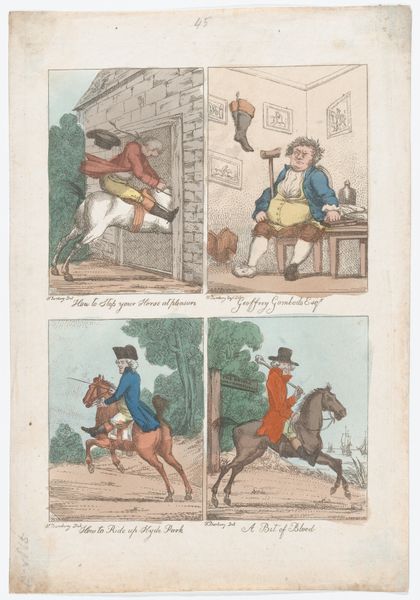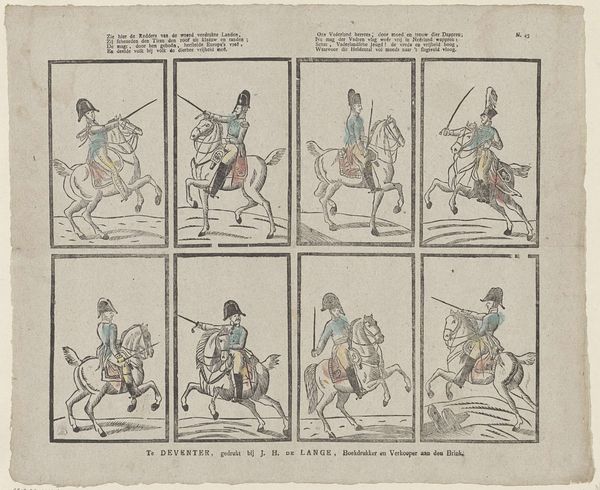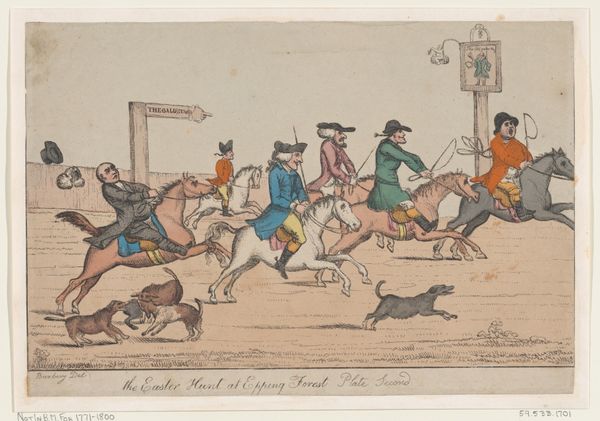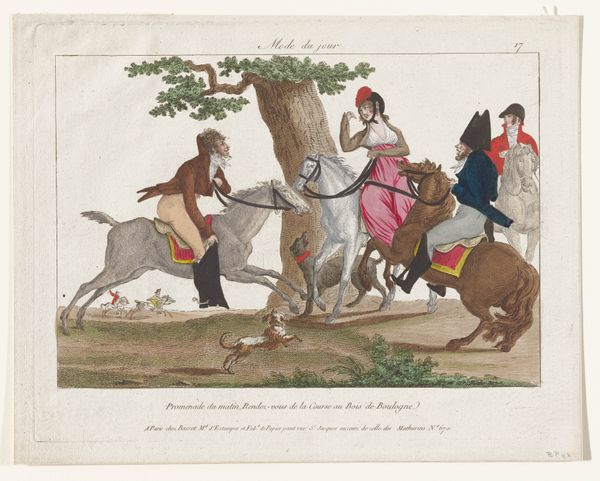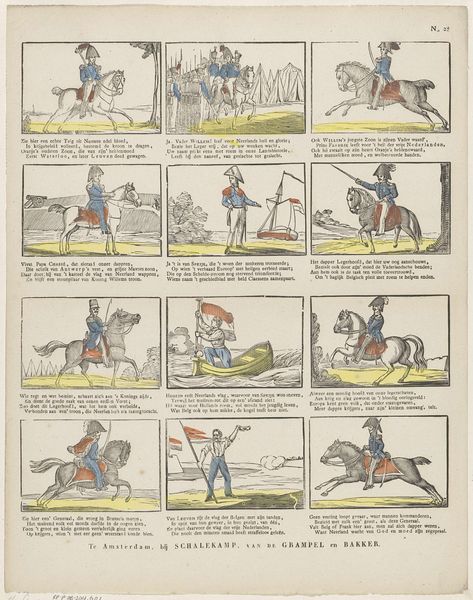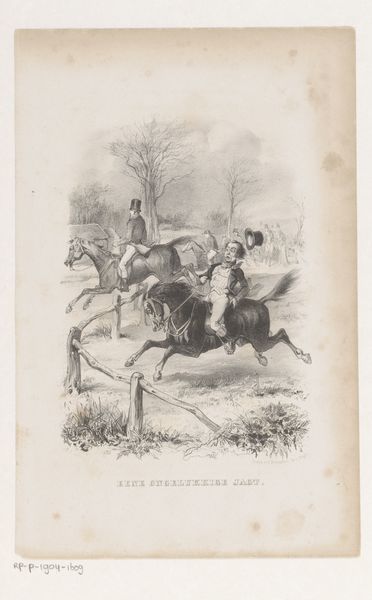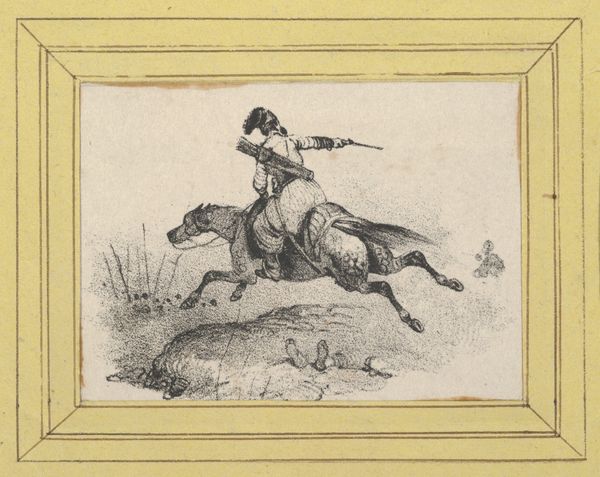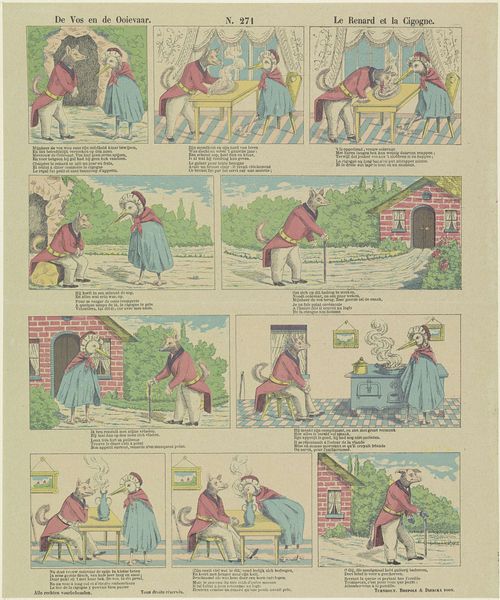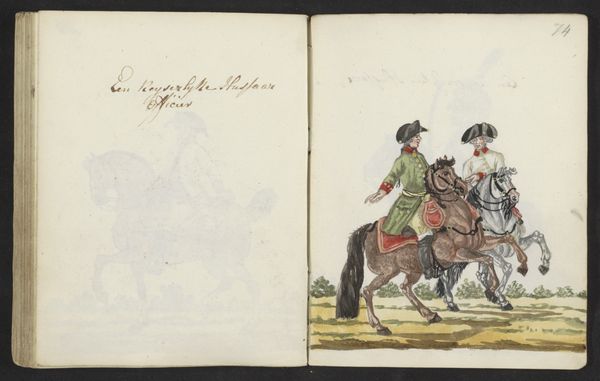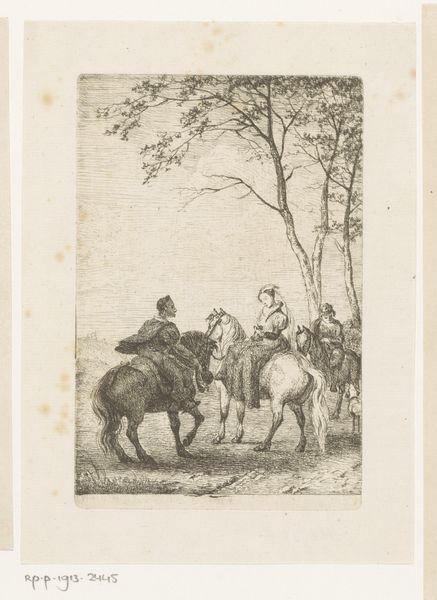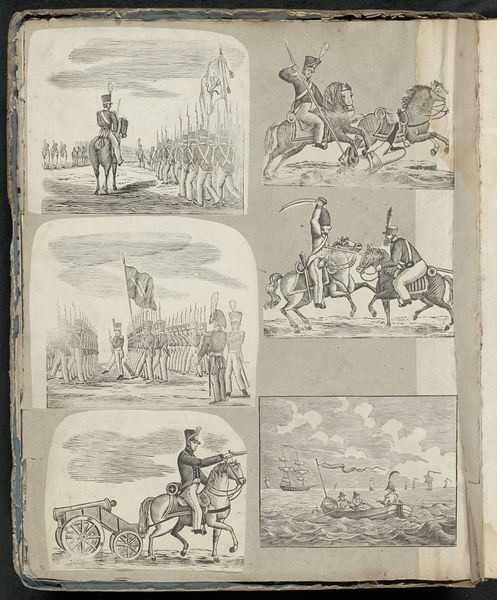
Four Scenes: How to Ride Genteel & Agreeable Down Hill; How to be Run Away With; The Mistaken Notion; How to Loose Your Way 1787
0:00
0:00
Dimensions: Each image: 5 5/16 × 4 3/16 in. (13.5 × 10.7 cm) Sheet: 15 3/8 × 10 9/16 in. (39 × 26.9 cm)
Copyright: Public Domain
Curator: I’m instantly drawn to the sheer chaos of this piece, it's so lively. Like a freeze-frame of some absurd, slapstick comedy unfolding. Editor: Indeed. This print, created by Henry William Bunbury in 1787, is entitled "Four Scenes: How to Ride Genteel & Agreeable Down Hill; How to be Run Away With; The Mistaken Notion; How to Loose Your Way". It's quintessential Georgian satire. Curator: Four vignettes capturing different flavours of horsey mishaps. I find them so amusing! Particularly “How to be Run Away With.” The sheer panic! Editor: Right. Beyond the humor, Bunbury's work touches upon class anxieties of the era. The image, created as a drawing and then reproduced as a print, was for mass consumption. Think about the expectations for conduct and how easily they crumble. Curator: The drawing's so economical! And then tinted delicately... The landscapes feel alive, yet almost theatrical in their rendering, as if it's all staged. It’s utterly charming. Do you think the intention was to mock or reflect? Editor: Perhaps a bit of both. Bunbury offers a critique of gentility but is also implicated in that world, which becomes so fraught in moments such as these, that lead to bodily exposure, humiliation, or violence. It's about the performance of being "genteel" and how readily disrupted it is by, say, an unruly horse. Curator: Or a misplaced wheelbarrow full of something resembling cannonballs! He cleverly shows how quickly things can unravel; our perfectly curated existence can turn into something hilariously unmanageable. There's a deeply felt truth, I think. I often wonder what he thought, making these… did he smirk, chuckling softly? Editor: I think Bunbury probably saw these scenes play out with some regularity! They speak to a broader anxiety about social mobility and stability—who gets to participate, who stumbles. The composition drives home how unstable even those in elevated positions in society can be, metaphorically and literally, as we see one rider on his face heading straight for the aforementioned wheelbarrow. Curator: Exactly! So while light-hearted, this really points to an inherent fragility of these roles... Thanks to Bunbury, and you, I may never mount a horse without picturing a wheelbarrow…! Editor: Nor will I. Here we find, humorously illustrated, anxieties we continue to grapple with in modernity: performance, control, and, of course, losing one's way.
Comments
No comments
Be the first to comment and join the conversation on the ultimate creative platform.
